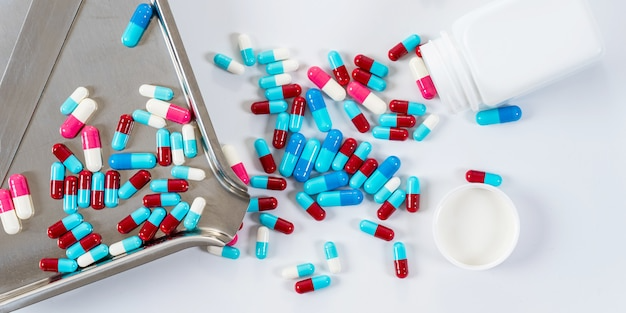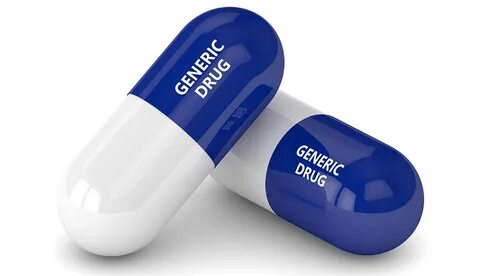Anticancer Drugs Market Soars to USD 495 Billion by 2030 on Robust Demand and Innovation
The Anticancer Drugs Market valued at approximately US $222.6 billion in 2023, is projected to nearly double to US $495.1 billion by 2030, driven by a compound annual growth rate of 12.1 percent, propelled largely by the surging incidence of cancer and accelerating breakthroughs in oncology research.
Market Growth Drivers & Opportunity
The industry’s expansion is underpinned by several intersecting factors:
-
Rising Cancer Prevalence and Aging Populations: Worldwide increases in cancer cases—especially breast, lung, colorectal, and prostate cancers—are fueling consistent demand for effective therapeutics.
-
Innovation in Targeted and Immune-Based Therapies: Biotech advancements—especially in monoclonal antibodies, tyrosine kinase inhibitors, CAR-T, and checkpoint inhibitors—are elevating treatment efficacy and opening premium market segments.
-
Government and Regulatory Support: Initiatives like accelerated FDA/EMA approvals, expanded clinical trial pipelines, and favorable reimbursement policies are lowering entry barriers and boosting R&D investment.
-
Health Infrastructure Expansion in Emerging Economies: Governments in Asia‑Pacific and Latin America are strengthening screening and treatment access, fostering rapid market growth.
-
Rising Adoption of Biosimilars: As patents expire, biosimilar alternatives are delivering cost-effective treatments, improving affordability and volume uptake.
Together, these drivers create a fertile landscape, with rising R&D budgets, expanding therapy pipelines, and surging global demand positioning the sector for transformative growth.
Segmentation Analysis
By Drug Type:
The market encompasses multiple therapeutic classes: cytotoxic drugs—such as alkylating agents and antimetabolites—continue to serve as foundational treatments. However, targeted drugs, including monoclonal antibodies and tyrosine kinase inhibitors, are experiencing the fastest uptake due to favorable safety and efficacy profiles. Hormonal drugs maintain relevance in hormone-dependent cancers, while “others” includes novel modalities still under clinical evaluation.
By Therapy Type:
Segmentation spreads across chemotherapy, targeted therapy, immunotherapy, and an array of other modalities. While chemotherapy remains the mainstay, the targeted and immunotherapy segments are witnessing rapid growth, supported by higher treatment success rates and fewer side effects.
By Cancer Type:
Key tested segments include breast, lung, stomach, colorectal, prostate, and liver cancers. Among these, breast cancer leads in spending and innovation, driven by extensive screening programs, elevated awareness, and sustained R&D investment.
By Distribution Channel:
Drugs are distributed primarily through hospital pharmacies, retail pharmacies, and an increasingly influential online pharmacy channel—which has surged, notably post–COVID‑19, due to remote care models.
Country‑Level Analysis
United States:
As the largest national market, the U.S. leads in innovation, regulatory facilitation, and healthcare spending. Breakthroughs in immuno-oncology and CAR‑T technology are driving sustained investment and approvals. The prevalence of breast and lung cancer further reinforces market expansion.
Germany:
Europe’s dominant market, Germany boasts strong biotech presence and universal reimbursement models. Rising adoption of biosimilars and precision medicine solutions are enhancing access and broadening the therapeutic scope for cancers like colorectal and prostate.
China:
China’s oncology drug market is expanding rapidly, fueled by increased cancer incidence and strong governmental backing for domestic drug development. Local companies are advancing biosimilar pipelines, while regulatory reforms are spurring international approvals and clinical trials.
Additional Markets: United Kingdom & India
United Kingdom:
The UK benefits from an integrated healthcare system (NHS) and emphasis on precision oncology. Investment in targeted therapies and national screening programs for lung and colorectal cancers are boosting uptake. Collaborative research in gene‑targeted drugs also offers upside potential.
India:
India is emerging as a significant market thanks to growing awareness, expanding healthcare infrastructure, and cost‑sensitive biosimilar production. While access remains variable, expanding generic oncologics and prioritization of breast and cervical cancer screening are supporting long-term growth.
Competitor Analysis
The report identifies leading industry players and highlights recent strategic developments:
Novartis, Pfizer, Merck & Co., Bristol‑Myers Squibb, Eli Lilly—the top five by market share—continue to drive industry innovation:
-
Novartis:
Strong in both small molecules and biologics, Novartis launched a next-gen oncology candidate in Q1 2025 and expanded its CAR‑T cell therapy trials across the U.S. and Europe. -
Pfizer:
Bolstered by its strong immuno-oncology portfolio, Pfizer recently announced global Phase III data for its latest checkpoint inhibitor and is scaling manufacturing for anticipated approval in late 2025. -
Merck & Co.:
Known for its best-selling Keytruda, Merck is deepening its drug pipeline and unveiled strong combination therapy data with a companion CDK4/6 inhibitor in March 2025. -
Bristol‑Myers Squibb:
A leader in immune-modulation, BMS completed its acquisition of biotech InnovateX in early 2025 to strengthen its monoclonal antibody and CAR‑T development capabilities. -
Eli Lilly:
With recent approvals in breast cancer targeted therapy, Lilly invested US $400 million in a new oncology R&D center in June 2025 to accelerate biologics and ADC development.
Additional Notable Players from Report:
-
Roche (F. Hoffmann‑La Roche): Strong antibody franchise and widespread biosimilars.
-
Amgen: Solid presence in cytokine and antibody oncology therapies.
-
Takeda, Celgene (BMS subsidiary), and Bayer: Diverse portfolios in small molecules and biologics.
Together, these firms achieved over 50% combined market share in 2023, reflecting a highly concentrated competitive landscape led by innovation, pipeline depth, and strategic investments.
Conclusion
The anticancer drugs market is entering a dynamic growth phase, driven by rising disease burden, breakthrough therapeutic innovations, and expanding healthcare infrastructures globally. With projected market value set to reach US $495 billion by 2030, opportunities abound for pharmaceutical innovators, biotech investors, and health systems alike.
As leading players advance their oncology pipelines and emerging markets continue to boost access, this sector will remain at the forefront of global health transformation—delivering both economic impact and life‑saving therapies.



